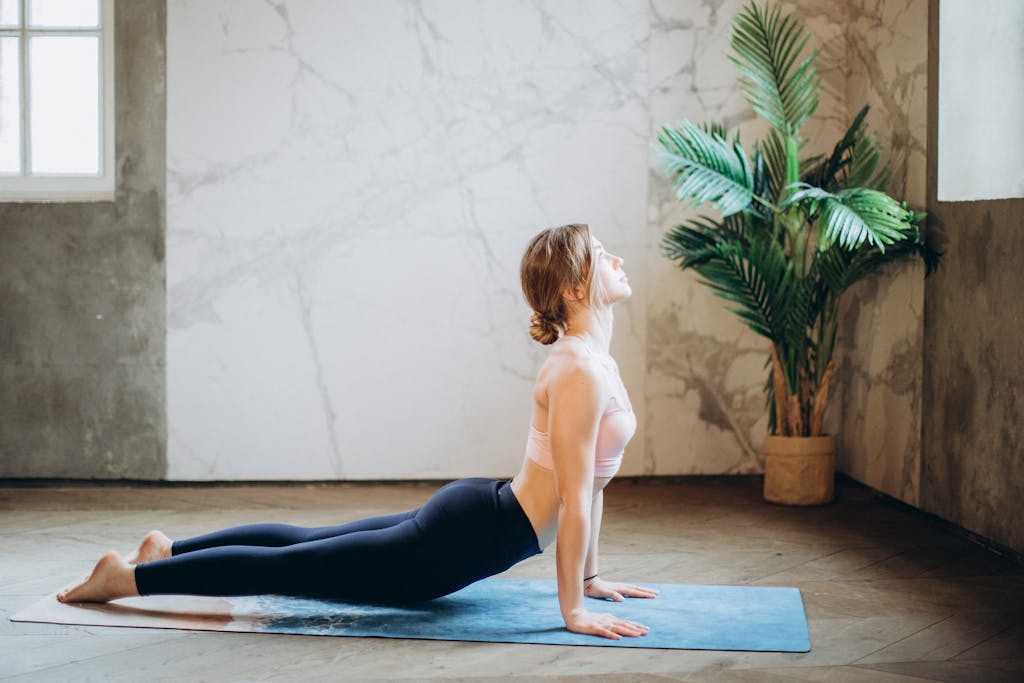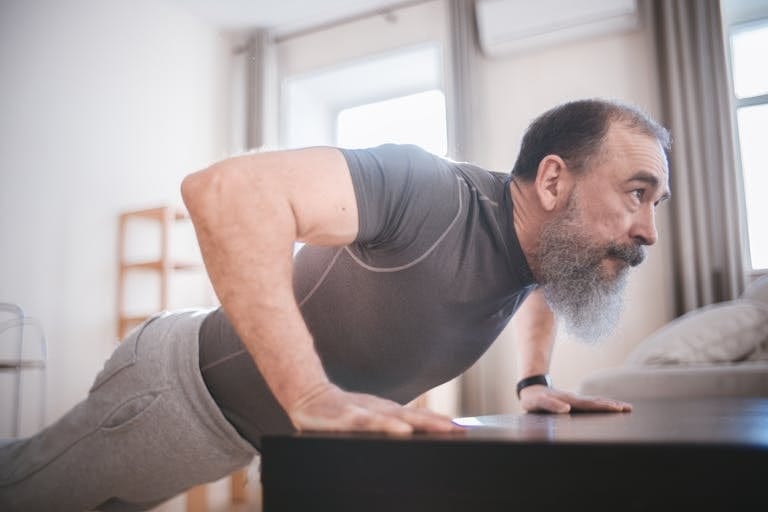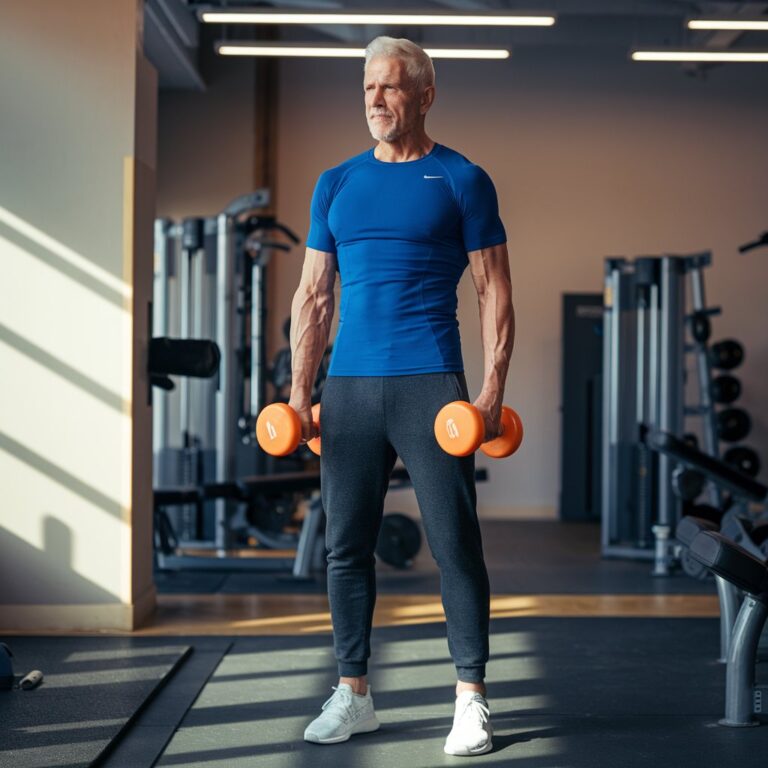FREE SHIPPING OVER $50
Can’t Sit Cross-Legged? Try These Trainer-Approved Standing Hip Stretches
Sitting cross-legged might seem simple, but for many, it’s an uncomfortable and even painful position. If you’ve ever found yourself fidgeting in discomfort, you’re not alone. This common issue often stems from tight hips, limited mobility, or even muscle imbalances. The good news is that standing hip stretches can help you build lower-body mobility, strength, and stability, making sitting cross-legged more comfortable over time.
Why Sitting Cross-Legged Can Be Uncomfortable

Before we dive into the stretches, let’s understand why sitting cross-legged can be challenging. Several factors contribute to this discomfort:
- Tight Hips: Prolonged sitting or lack of movement can lead to tight hip muscles, which restrict flexibility and range of motion.
- Limited Mobility: Age, injury, or lack of exercise can reduce hip joint mobility, making cross-legged sitting difficult.
- Muscle Imbalances: Weakness in certain muscle groups, like the glutes or hip flexors, can cause an imbalance, leading to discomfort in the hips and lower back.
Now that we’ve identified the problem, let’s explore some effective standing hip stretches that can help alleviate these issues.
Trainer-Approved Standing Hip Stretches
1. Standing Hip Flexor Stretch
The standing hip flexor stretch is great for targeting the front of your hips. Here’s how to do it:
- Step 1: Stand with your feet hip-width apart.
- Step 2: Step your right foot back into a lunge position.
- Step 3: Keep your left knee bent and your right leg straight.
- Step 4: Push your hips forward and hold the stretch for 20-30 seconds.
- Step 5: Switch sides and repeat.
This stretch helps lengthen the hip flexors, improving flexibility and reducing tension.
2. Standing Quad Stretch
The standing quad stretch targets the quadriceps, which play a significant role in hip mobility:
- Step 1: Stand on your left leg and grab your right ankle with your right hand.
- Step 2: Pull your right heel towards your glutes, keeping your knees close together.
- Step 3: Hold the stretch for 20-30 seconds.
- Step 4: Switch sides and repeat.
This stretch improves the flexibility of the front thigh muscles, aiding in better hip movement.
3. Standing IT Band Stretch
The IT band stretch helps alleviate tightness along the outer thigh:
- Step 1: Stand with your feet together.
- Step 2: Cross your right leg behind your left leg.
- Step 3: Lean to the left side, pushing your hips to the right.
- Step 4: Hold for 20-30 seconds.
- Step 5: Switch sides and repeat.
This stretch targets the iliotibial band, which can contribute to hip and knee pain if tight.
4. Standing Hamstring Stretch
The standing hamstring stretch is essential for flexibility and reducing lower back tension:
- Step 1: Place your right foot on an elevated surface, like a bench or step.
- Step 2: Keep your leg straight and lean forward from your hips.
- Step 3: Hold the stretch for 20-30 seconds.
- Step 4: Switch sides and repeat.
Flexible hamstrings can improve overall hip mobility, making sitting cross-legged easier.
5. Standing Glute Stretch
The standing glute stretch focuses on the gluteal muscles, which are crucial for hip stability:
- Step 1: Stand with your feet hip-width apart.
- Step 2: Cross your right ankle over your left knee, forming a figure-four shape.
- Step 3: Sit back slightly, as if you’re sitting on an imaginary chair.
- Step 4: Hold the stretch for 20-30 seconds.
- Step 5: Switch sides and repeat.
This stretch helps release tension in the glutes and improve hip mobility.
Incorporating These Stretches into Your Routine
Consistency is key when it comes to improving flexibility and mobility. Here are some tips to incorporate these stretches into your daily routine:
- Warm-Up: Always warm up your muscles before stretching. A light jog or brisk walk for 5-10 minutes can suffice.
- Frequency: Aim to perform these stretches at least 3-4 times per week for optimal results.
- Hold Time: Hold each stretch for 20-30 seconds and repeat 2-3 times on each side.
- Breathe: Remember to breathe deeply and relax into each stretch. Avoid bouncing or forcing the movement.
Benefits of Standing Hip Stretches
Standing hip stretches offer numerous benefits beyond just making sitting cross-legged more comfortable:
- Improved Mobility: Regular stretching enhances the range of motion in your hips, making daily activities easier.
- Increased Strength: Many stretches also engage and strengthen the muscles around your hips.
- Better Posture: Stretching helps correct muscle imbalances and improve overall posture.
- Pain Relief: Reducing tightness in the hips can alleviate lower back and knee pain.
Conclusion
If sitting cross-legged has been a challenge for you, incorporating these trainer-approved standing hip stretches can make a significant difference. By improving your hip flexibility, strength, and stability, you’ll not only find sitting cross-legged more comfortable but also enhance your overall mobility and quality of life.



